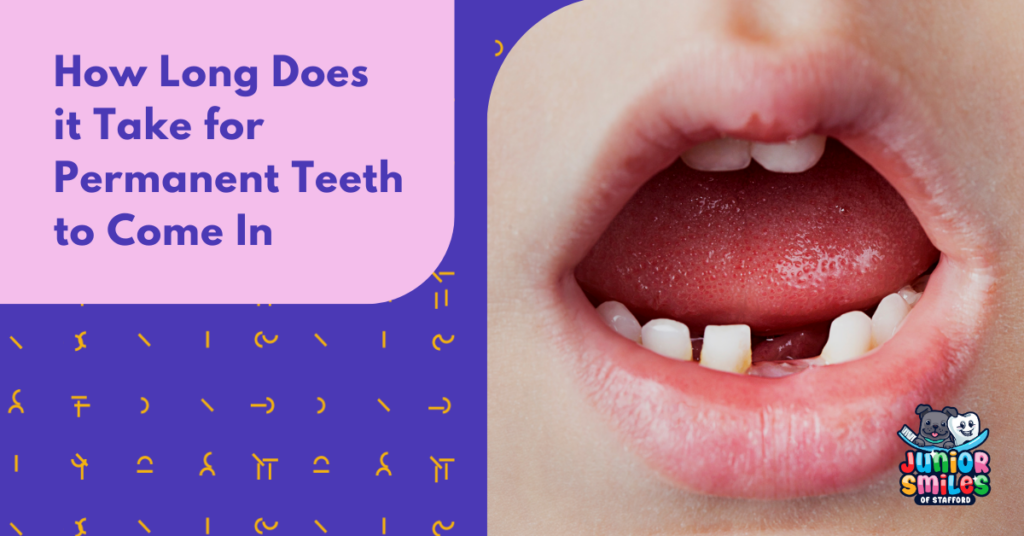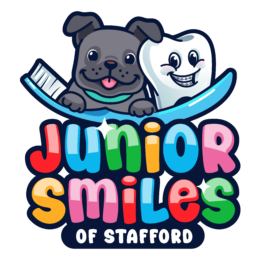How Long Does it Take for Permanent Teeth to Come In?

It’s common for parents to be excited about their baby’s first set of permanent teeth, especially if there’s one missing tooth–making a gap in teeth. These kids might look cute with a gappy grin, but as a parent, you still can’t help but worry about it. Understanding the timeline for the emergence of permanent teeth is crucial for parents concerned about their child’s dental health.
What to Know About Permanent Teeth
When we talk about the journey from baby teeth to permanent teeth, there’s a wealth of detail that goes into the transition. Permanent teeth are the markers of a milestone in growth, the symbols of stepping into a future of adult smiles. But before we witness the arrival of these future adult teeth, it’s essential to understand the path they take, often starting with the loss of their predecessors, the baby teeth.
Understanding the Transition from Baby Teeth to Permanent Teeth
It’s a natural process: as children grow, they begin to lose their baby teeth. But what happens if a tooth extraction is necessary? For example, decay in baby teeth can sometimes lead to the need for removal, especially if it affects the health of adjacent baby teeth. The removal of decayed baby teeth is a carefully considered decision, ensuring that it’s the best move for the health of the upcoming permanent teeth.
But here’s an intriguing fact: baby teeth act as placeholders for the permanent ones. This means that if baby teeth fall out too early, due to decay or extraction, it can affect the spacing and health of the forthcoming permanent teeth. That’s why maintaining the health of baby teeth is crucial.
Monitoring the Development of Permanent Teeth
Molar teeth, those flat and strong teeth at the back of the mouth used for grinding food, are usually the first permanent teeth to erupt, around the age of 6. This marks the beginning of a mix-and-match dental era, where baby teeth and permanent teeth coexist. As more permanent teeth come in, they might also bring along some additional teeth, such as the wisdom teeth, much later in adolescence.
The timeline for the emergence of permanent teeth can vary from child to child. Sometimes, you might notice new teeth developing behind the baby teeth, a situation that’s commonly referred to as “shark teeth.” Intervention might be necessary if the permanent teeth are unable to push out the adjacent baby teeth naturally.
The Role of Canine Teeth
Canine teeth, also known as cuspids, are the pointed teeth that sit next to the incisors. These teeth are crucial for tearing food and also play a significant role in dental structure and speech. The lower canines typically come in around the age of 9, while, as mentioned before, the upper canines come in a bit later.
The Journey of Permanent Teeth – A Timeline
The process of permanent tooth eruption is just that—a process. It doesn’t happen overnight, and it follows a general timeline, although the exact timing differs from child to child.
The Initial Stage (Ages 6-7)
Typically, children begin to lose their primary teeth around the age of six or seven. The first teeth to fall out are usually the central incisors, which is often considered a monumental moment for every average child. It’s at this stage that the first permanent teeth, known as the molars, begin to erupt, laying the foundation for the adult teeth that will eventually populate the mouth. This stage is also a popular time for the tooth fairy to visit!
Continued Development (Ages 8-12)
As children continue to grow, so does their jawbone, making room for the larger permanent teeth that are still to come. From approximately eight years of age until they’re twelve, kids lose their remaining baby teeth. During this period, lateral incisors, canines, and premolars break through the gums and start to take their place in the mouth. It’s essential that the child practices good oral hygiene during this time to prevent infected teeth and ensure healthy teeth.
The Final Stretch (Ages 12-13)
By the time most children reach their early teenage years, they have almost all of their permanent teeth. Exceptions include the third molars, or wisdom teeth, which don’t appear until later in adolescence or early adulthood.
The Wisdom Teeth (Ages 17-21)
Between the ages of 17 and 21, the final set of permanent teeth start to come in. These third molars, known colloquially as wisdom teeth, can be a significant milestone, often requiring monitoring from dental professionals to ensure they don’t impact the other upper teeth.
What are Factors Influencing the Eruption of Permanent Teeth?
It’s important to note that while the above timeline is standard, individual variations occur. Factors such as heredity, oral health, and overall physical health can influence the timing.
Genetic Factors
Just as traits like height and hair color are passed down through families, so too are patterns of tooth development. Parents might often notice that their children’s dental milestones align with their own or those of their close relatives. Certain genetic disorders, like ectodermal dysplasia, can influence the development and eruption of teeth. Children with such conditions might have missing or malformed extra teeth.
Nutritional Factors
Adequate intake of nutrients, particularly food rich in calcium, vitamin D, and phosphorus, is crucial for healthy tooth development. Deficiencies can delay eruption and affect the health of the teeth. Parents should also limit their children’s intake of sugary food to prevent tooth decay and decayed teeth. Extended bottle-feeding or prolonged use of a pacifier can potentially affect jaw growth and alignment of the teeth.
Oral Health
If a child’s jaw is too small to accommodate the emerging permanent teeth, it can lead to overcrowding, causing teeth to come in the wrong direction or misaligned. If primary teeth are lost prematurely due to decay or injury, neighboring teeth may drift into the empty space. This can create alignment issues and potentially block or delay the eruption of a permanent adult tooth.
Habits
Prolonged thumb sucking can affect the alignment of the teeth and the shape of the mouth, potentially influencing how and when permanent teeth come in. Persistent pushing of the tongue against the teeth can lead to misalignment, which in turn can impact the eruption of permanent teeth.
Keeping Track of Your Child’s Dental Development
Given the variations in the timeline, it’s essential for parents to monitor their children’s dental health by keeping regular dental appointments. These check-ups allow dentists to identify potential issues early and, if necessary, create a treatment plan to guide the teeth into the correct position as they come in.
Contact Junior Smiles of Stafford to Learn More About Your Child’s Tooth Development
The journey from baby teeth to a permanent set is a rite of passage. While most permanent teeth will typically come in by the early teenage years, remember that each child’s “tooth timeline” is unique. Maintaining regular dental checkups will ensure that, no matter your child’s individual schedule, their oral health remains a priority.
If you have any concerns about your child’s tooth development or if you suspect a delay, don’t hesitate to reach out to the experts. At Junior Smiles of Stafford, we specialize in pediatric dentistry and offer a joyful and stress-free environment for your child’s dental appointments. Contact us today to learn more and ensure your child’s oral health is in safe hands.

